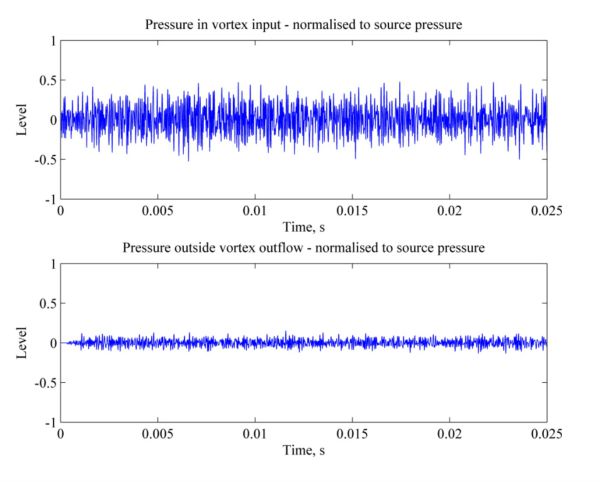British loudspeaker manufacturer Flare Audio builds products on the principle of Waveform Integrity: the signal that goes into the loudspeaker is precisely replicated by the sound wave that comes out. Flare believes the loudspeaker should be sonically invisible, allowing the driver to deliver sound without interference. The company wanted to see if the effects of its Vortex™ technology which they believed to capture sound, could be scientifically verified, and so commissioned Salford University to put the technology through independent testing. Scientists used three samples provided by Flare Audio for the test: 50%, 75% and 100% vortex designs milled from circular aluminium disks. Once the measurements were made, processing was performed to extract the normal incidence transmission loss in dB of the samples in question and this data was then plotted with respect to frequency. A steady increase in the transmission loss was shown from each of the samples with increased frequency. Using the mathematical ‘mass law equation’ researchers also predicted how a solid plate of the same mass would behave and found that vortex silencing was just as effective. They also compared the performance of the vortex against that of a straight hole and found a significant difference in the behaviour of the vortex, which exhibited a higher transmission loss across almost all measured frequencies. This independent test data proves that vortex technology has the ability to silence sound whilst maintaining airflow which a solid material would restrict.
Davies Roberts, founder and CEO of flare Audio said: “We are really excited about the findings, which prove beyond any doubt that we are really onto something here, especially the finding that the silencing effect is as good as a solid plate of aluminium. We believe that allowing increased air movement to pass through the vortex (but not sound) removes a driver’s non-linearity of movement (spring effect of air inside a sealed loudspeaker) as well as stopping sound interference from a port (ported loudspeaker). Asymmetry distortion (also known as DC Offset) is a hidden distortion that affects every traditional loudspeaker (at every frequency). The effect of a closed or pressure restricted system (the traditional approach to all speaker designs) distorts sound waves and causes asymmetry which changes the timbre of sound.”
Audio consultant Dr. Rob Oldfield, who conducted the measurements at Salford, confirms: “It’s clear that there is a significant level decrease between what enters the vortex and what leaves it, which suggests that there is some sound attenuation going on as sound propagates within the vortex. Interestingly we don’t know what happens to the sound energy in the case of the vortex. We can only state the proportion of energy that is transmitted through the structure. Further tests could shed more light on this.”
Flare’s work with Salford University is on going and includes computational modelling which will show energy flow inside Flare’s Vortex™. Flare is also looking into software to assist with particle flow analysis inside the vortexes.




















































































































































































































You must be logged in to leave a reply.